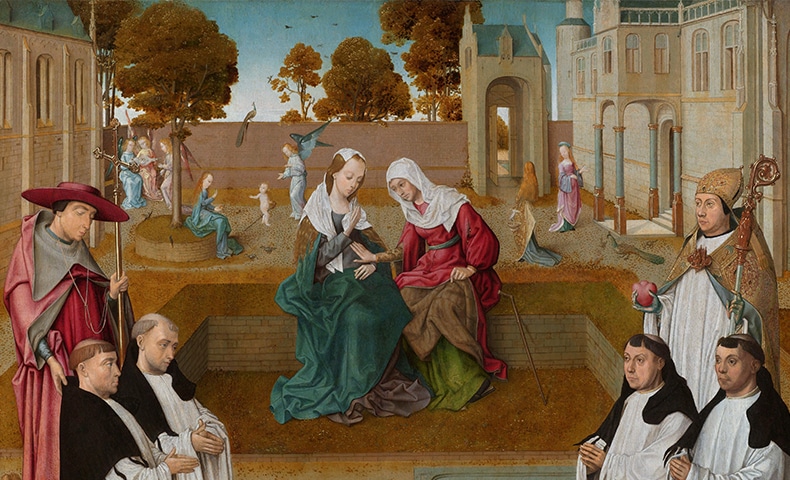Do not let your hearts be troubled. Trust in God; trust also in me.

This is a fairly late feast, going back only to the 13th or 14th century. It was established widely throughout the Church to pray for unity. The present date of celebration was set in 1969, in order to follow the Annunciation of the Lord and precede the Nativity of Saint John the Baptist.
Like most feasts of Mary, it is closely connected with Jesus and his saving work. The more visible actors in the visitation drama (see Luke 1:39-45) are Mary and Elizabeth. However, Jesus and John the Baptist steal the scene in a hidden way. Jesus makes John leap with joythe joy of messianic salvation. Elizabeth, in turn, is filled with the Holy Spirit and addresses words of praise to Marywords that echo down through the ages.
It is helpful to recall that we do not have a journalists account of this meeting. Rather Luke, speaking for the Church, gives a prayerful poets rendition of the scene. Elizabeths praise of Mary as the mother of my Lord can be viewed as the earliest Churchs devotion to Mary. As with all authentic devotion to Mary, Elizabeths (the Churchs) words first praise God for what God has done to Mary. Only secondly does she praise Mary for trusting Gods words.
Then comes the Magnificat (Luke 1:46-55). Here, Mary herselflike the Churchtraces all her greatness to God.
One of the invocations in Marys litany is Ark of the Covenant. Like the Ark of the Covenant of old, Mary brings Gods presence into the lives of other people. As David danced before the Ark, John the Baptist leaps for joy. As the Ark helped to unite the 12 tribes of Israel by being placed in Davids capital, so Mary has the power to unite all Christians in her son. At times, devotion to Mary may have occasioned some divisiveness, but we can hope that authentic devotion will lead all to Christ and therefore, to one another.